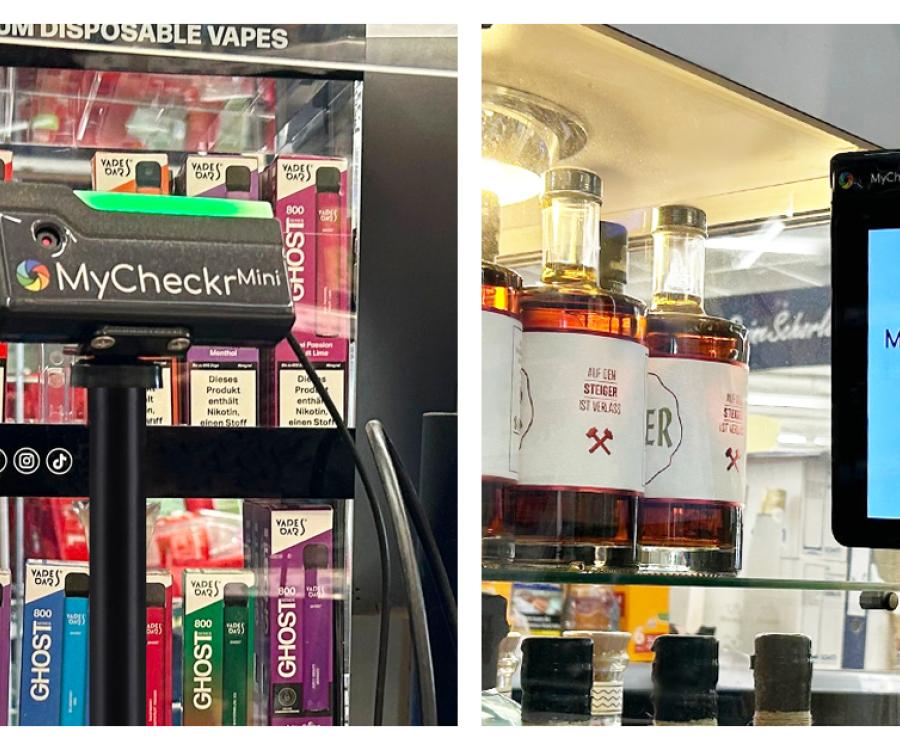
Online store operators can track their visitors "at every click". Many brick-and-mortar retailers, on the other hand, don't know much about their (potential) customers. Yet all industry experts agree: data is worth its weight in gold.
We spoke with Florent Hediard, Global Marketing Director at Navori Labs, about the necessary transformation and the opportunities in traditional retail.
Florent, do you think there is a need for change in retail, for new business models?
Florent Hediard: Without a doubt. Physical businesses will no longer be the same after COVID-19. This worldwide pandemic only accelerated the “off-line” business transformation.
Customers already assimilated the “online” business benefits – more choices, faster process, no restrictions of time or location, cheaper deals. And all of this from the comfort of their home.
At the same time, customers also realize that the lazier “sofa buying” isn’t the ultimate experience either. The purchasing act is more complex as it involves both rational and desire. Retail professionals know that they must create a positive selling experience to its clients, and that the seven traditional steps in the sales process are being challenged by online purchases: Prospecting and qualifying, preparation/pre-approach, approach, presentation, overcoming objections, closing the sale and follow-up. The key will be to balance each step properly and according to their product or service as well as their clients’ profile and expectations.
Implementing an omnichannel strategy isn’t an alternative anymore, it’s a must. Retailers should consider this new paradigm if they haven’t done so yet, their survival depends on it.
You say that retailers should address this issue now rather than later. Why the hurry?
As the consumer’s expectations are growing from both a product and an experience perspective, it is crucial for manufacturers and retailers alike to know their clients, whether they come from the web or through their doors. Customization, interactivity, reliability, and loyalty are key concepts to master in their service offer and communication channels.
Increased global competition makes it even tougher for retailers to sell their products, as they feel they have less control on the act of purchase, whilst its harder for them to justify investments in physical spaces without trustable data to ensure a solid ROI.
To paraphrase Bernardo Trujillo’s famous quote “no parking, no business”, I think it’s now safe to say: “no business intelligence, no future”.
Why should retailers switch to an AI driven marketing analytics solution?
Data is king! This is the reason why data analysts and data scientists are so sought after. In our ever increasingly complex world, data is everywhere, and as our industry is heading to full integration, the need of smart data analysis goes beyond the simple data management. Business intelligence (BI) or data intelligence is key to anticipate customer needs and help us adapt and evolve quickly. Artificial intelligence (AI) as a tool helps us improve decisions by providing us with accurate data.
When it was first implemented, AI computer vision was able to detect and count human shapes. The second generation helped us identify gender and age group with 60 percent reliability. Our new marketing analytics software, Aquaji, for example, is based on convolutional neural network technology and embodies the third generation: while ensuring complete anonymity, such software tools identify each visitor according to his/her silhouette, body shape, and facial metrics, to provide information about gender and age with – in our case – a 98 percent accuracy, making the blind and static role of sensors completely obsolete.
It is well known how we analyse user behaviour online. What kind of information or metrics can you gain on the physical retail space?
Every business goal is to improve performance and provide better customer experience. But without in-depth intel and regular KPIs, carrying out an analysis or assessment of physical visitors is an impossible task.
A vision-based software platform like ours, dedicated to on-site visitor analysis, interprets video streams from cameras in order to deliver metrics on visitor attendance, profile and experience, optimize digital signage content on-air and provide data to enhance BI.
A software like Aquaji is able to deliver key data analytics on four domains, while preserving visitor privacy: Foot traffic, length of stay, waiting time and attention span for products and advertising. All of this helps in turn to measure the attractiveness of a location and implement changes to further improve the retail experience.
Which kind of improvements and return on investments can retailers expect?
As a new strategic tool for omnichannel marketing and store managers, a software like Aquaji produces and links data gathered from multiple customer experiences. It is revolutionizing merchandising by producing a new source of continuous, reliable and comparable data sets.
Retailers but also manufacturers in the fast-food, hospitality, transportation, advertising networks and so on, will be able to understand visitors and their habits; improve footfall, length of stay and return visits; measure the effectiveness of entrance inbound marketing campaigns and merchandising decisions; optimise human resources allocation, as a function of visitor footfall and waiting times; measure the attractiveness of new products, themes and layouts; provide in-depth advertising campaign metrics and audience classifications; monitor the productivity of sales advisers; identify the focal points of visitor attention, and analyse paths to purchase; automatically adjust screen content depending on personas and situation; and much more.
Marketing activities, daily management and product placement decisions will directly benefit from this, which will in turn improve the overall customer experience and help retailers’ businesses thrive.





